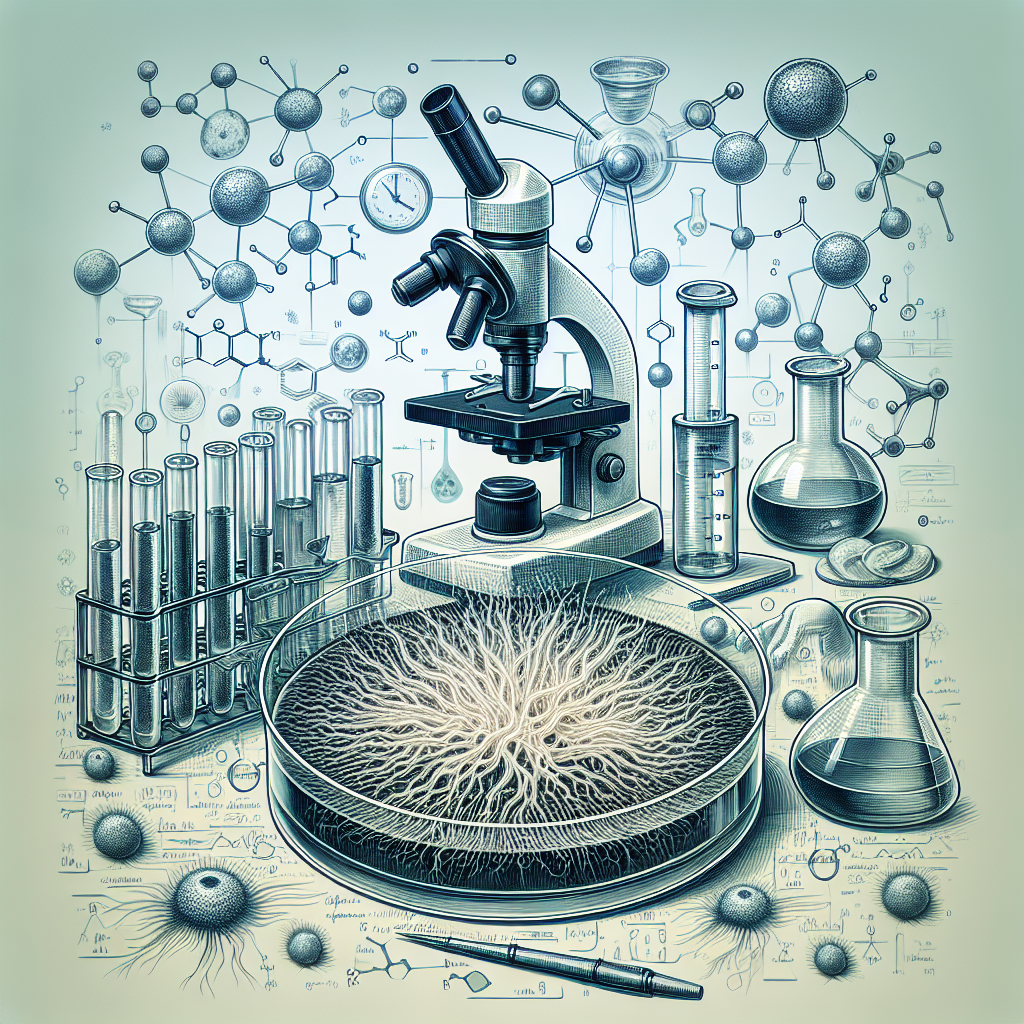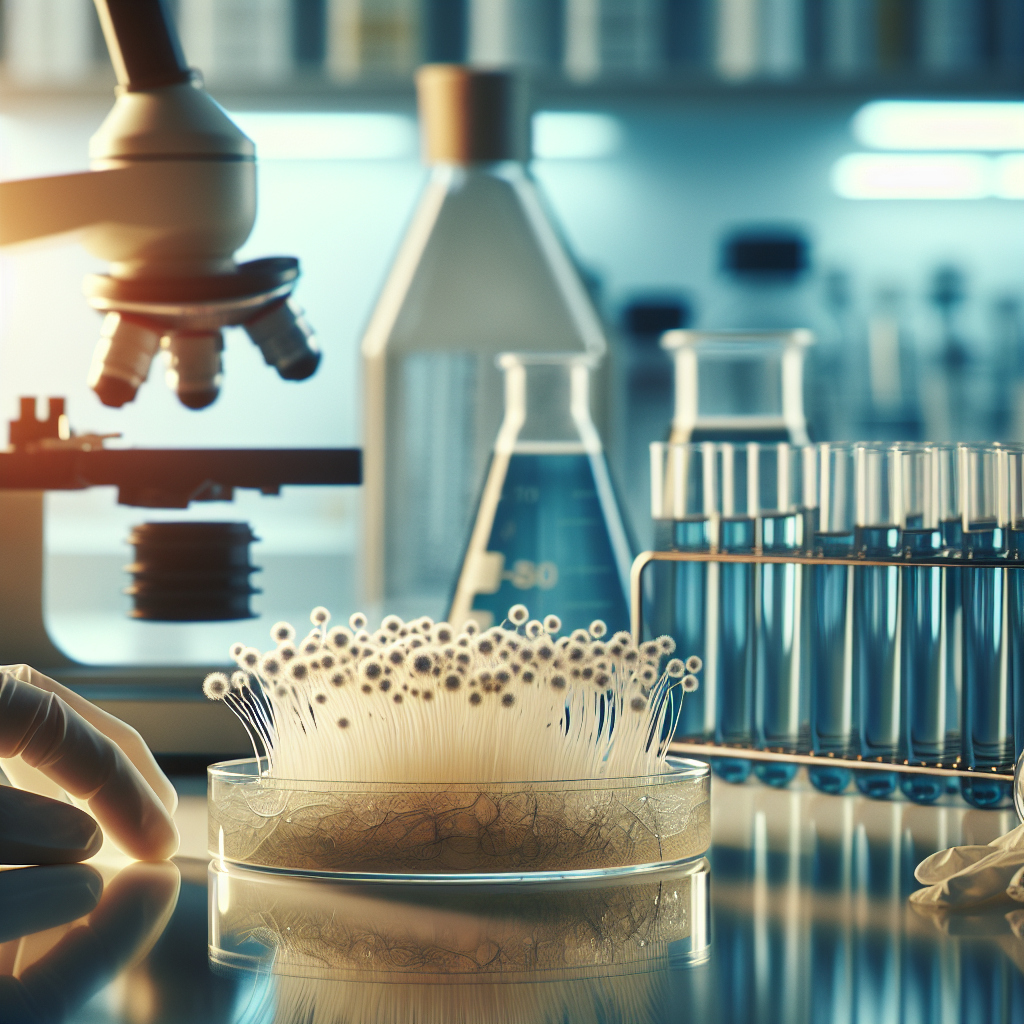In the realm of microbiology, the cultivation of mycelium, the vegetative body of fungi, in the nutrient-rich environment of agar often yields fascinating results. “The Science of Growing Mycelium in Agar” distills this complex process into an accessible format. It provides a comprehensive view of how you, as a budding mycologist or a seasoned microbiologist, can harness the power of agar to propagate mycelium, significant because of its strong potential in mitigating environmental pollution, offering novel medical treatments, and supporting sustainable food production systems. It gyroscopes around every necessary facet, from scientific principles to best practices and common pitfalls in creating an optimal growing environment for this unique organism.
Understanding Mycelium
Definition and roles of Mycelium
Mycelium is a vital part of fungi, which represents the vegetative part of fungal organisms. It consists of a network of thread-like structures known as hyphae, which absorb nutrients for the fungi. Mycelium is responsible for breaking down plant material in the ecosystem, enabling the recycling of vital nutrients.
Life cycle of Mycelium
The life cycle of mycelium begins with the germination of spores. These germinated spores form filamentous hyphae, which collectively make up the mycelium. Through a series of cellular growth and division, the hyphae proliferate into colonies, fostering the overall growth of mycelium. The mycelium can also reproduce asexually or sexually, producing new spores for the subsequent generation.
Significance of Mycelium in an Ecosystem
Mycelium plays a pivotal role in the ecosystem by decomposing organic matter and returning essential nutrients back into the soil. This decomposition process also helps in the creation of rich and fertile soil. In addition, mycelium forms symbiotic relationships with plant roots, enhancing the uptake of nutrients and promoting plant growth.
The Basics of Agar
What is Agar
Agar is a gelatinous substance derived from red algae used primarily in scientific research as a culture medium. It provides a hospitable environment for the growth of microorganisms.
Origin and Properties of Agar
Agar originated from the cell walls of red algae. It has a remarkable property of remaining solid at room temperature, while it only melts at high temperatures. This makes it an ideal medium for culturing organisms as it remains stable during the growth phase.
Common Uses of Agar in Biological Research
Apart from serving as a culture medium, agar is used for various aspects in biological research. It is employed in gel electrophoresis for the separation of DNA and proteins. Agar is also utilized for microbial assays to check the potency of antibiotics and vitamins.

What is Mycelium Agar
Definition and Purpose of Mycelium Agar
Mycelium agar is a combination of agar and nutrients specifically formulated to promote the growth of mycelium. It is widely used in mycological studies and mushroom cultivation to provide a supportive environment for mycelium propagation.
Benefits of Using Agar for Mycelial Growth
Using agar for Mycelial growth has several benefits. It offers a sterile environment that helps prevent contamination from other microbes. The use of agar can significantly enhance the growth rate of mycelium as it provides all the necessary nutrients.
Typical Mycelium Agar Compositions
Typically, mycelium agar is composed of agar, water, and specific substances for the required nutrition such as malt extract, yeast extract, and glucose. The composition can be varied depending on the type of fungi being cultured.
Setting up your Mycelium Agar
Essential Materials and Equipment
The essential materials and equipment required for setting up your mycelium agar include petri dishes, an autoclave or pressure cooker for sterilization, a refrigerator for storage, and a laminar flow hood or a clean glove box to ensure a sterile work environment.
Steps in Preparing the Agar
Preparing the agar involves dissolving an appropriate amount of agar in distilled water, adding the necessary nutrients, and then boiling the mixture until the agar is completely dissolved. This mixture is then decanted into petri dishes and allowed to solidify.
Sterilization Process for Equipment and Workspace
The sterilization of the workspace and equipment is crucial to the success of the agar preparation. This is usually achieved by heat sterilizing all equipment and materials in an autoclave. The workspace can be sterilized with disinfectants and a flame source.

Inoculating the Agar with Mycelium
Choosing your Mycelium Source
The mycelium source for the inoculation can either be a spore print, a piece of fresh mushroom, or an already established vegetarian culture. The choice of your mycelium source should depend on your specific objectives and the species of fungi you wish to grow.
Transferring Mycelium onto the Agar
The mycelium is transferred onto the agar in a sterile environment to prevent contamination. This is usually done by streaking the mycelium sources across the surface of the agar using a sterile inoculation loop.
Creating a Sterile Environment during Inoculation
Creating a sterile environment during inoculation is critical to avoid contamination. An effective way to do this is by using a laminar flow hood or a glove box, both of which provide a sterile environment to work in.
Growth and Maintenance of Mycelium
Optimal Conditions for Mycelial Growth
Mycelial growth is best under specific conditions. These include a balanced pH, an optimal temperature range, and the presence of proper nutrients in the medium. Variations in these parameters could lead to inferior growth or even death of the mycelium.
Factors Influencing Mycelial Growth on Agar
Several factors regulate mycelial growth on agar, including temperature, pH, illumination, and nutrient concentrations. Understanding and optimizing these factors can help achieve optimum mycelial growth.
Common Challenges in Mycelium Growth and their Solutions
Some common challenges facing mycelium growth and their solutions include contamination, which can be avoided by maintaining proper sterility; slow growth, which can be improved by optimizing growth conditions; and mutations, which can be mitigated by using high-quality mycelium sources.
Observing and Documenting Mycelial Growth
Tools for Observing Mycelium
Tools such as a microscope, magnifying lens, or even a keen naked eye can observe mycelial growth. These tools can help quantify the degree of growth and detect any indications of disease or contamination.
Key Indicators of Healthy Mycelial Growth
Healthy mycelial growth is characterized by several key indicators, such as a uniform hyphal density, absence of contamination, and a typical growth pattern. Each species has a characteristic growth pattern, and consistency within this pattern is a good indicator of healthy growth.
Documenting and Measuring Mycelial Growth
Documenting and measuring mycelial growth is an essential part of the process. This can be achieved by taking regular photographs and noting physical attributes like the growth rate, the size of the colonies, and their color and texture.
From Mycelium Agar to Mushroom Cultivation
Transferring Mycelium to Growth Media
Once the mycelium has sufficiently colonized the agar, it can be transferred to a growth medium suitable for mushroom cultivation using sterile techniques.
Different Growth Media for Mushroom Cultivation
Different types of mushrooms require different types of growth media. Some common types of growth media include grain, straw, wood chips, compost, and sugar-rich substrates.
Strategies for Continuous Cultivation
Continuous cultivation requires strategies such as regular substrate changes, providing appropriate environmental conditions, preventing contaminations, and efficient harvesting practices.
Common Issues in Growing Mycelium in Agar
Dealing with Contamination
Contamination is the most significant issue in growing mycelium in agar. It can be dealt with by maintaining strict sterility during culturing and handling processes, using proper sterilization techniques, and monitoring cultures regularly for signs of contamination.
Slow or Inhibited Mycelium Growth
Slow or inhibited mycelium growth could be due to factors like improper nutrition, inadequate moisture, and unsuitable pH or temperature conditions. Addressing these issues will improve the growth rate.
Preventative Measures Against Common Issues
Preventative measures include maintaining strict sterility, optimizing culture conditions, monitoring growth regularly, and using quality mycelium sources.
Additional Uses of Mycelium in Agar
Mycelium Agar in Genetic Research
Mycelium agar serves as a crucial tool in genetic research, particularly in studying the fungus’s genetic makeup.
Using Mycelium Agar for Fungal Identification
Mycelium agar assists in identifying different fungi species based on their growth patterns and morphological characteristics under ideal lab conditions.
Mycelium Agar as an Educational Tool
Lastly, mycelium agar is commonly used as an educational tool. It provides students with firsthand experiences, encouraging them to learn about fungal life cycles, experiment with different growth conditions, and understand the complexities of the fungal world.